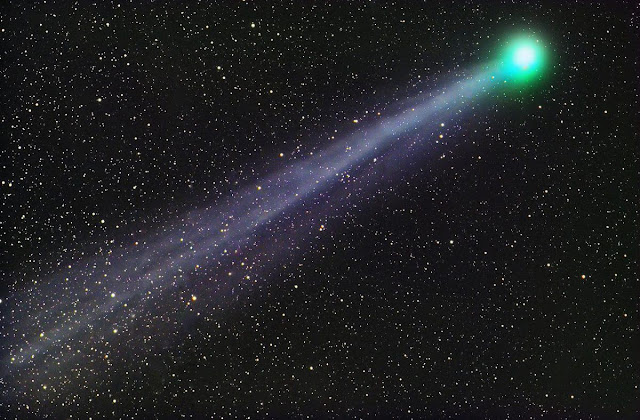- Get link
- X
- Other Apps
- Get link
- X
- Other Apps
Despite the fact that 2023 has only started, the cosmos are already poised to create history.
A comet that was just recently identified will be visible in a few weeks during what is likely to be its one and only documented appearance. The comet is expected to have traveled billions of kilometers from its thought beginnings near the fringe of our solar system.
In March 2022, the comet C/2022 E3 (ZTF) was initially seen when it passed through Jupiter's orbit. It's a long-period comet that NASA believes originated in the Oort Cloud, the furthest area of the solar system, which is described as "like a gigantic, thick-walled bubble formed of frozen chunks of space debris" and may grow to be even larger than mountains.
According to estimates, the inner boundary of this zone is located between 2,000 and 5,000 astronomical units (AUs), or 186 billion and 465 billion miles, from the sun.
This indicates that C/2022 E3 (ZTF) has traveled on a unique, exceptional voyage to be near Earth.
"Most known long-period comets have been seen only once in recorded history because their orbital periods are so, well, long," NASA says. "Countless more unknown long-period comets have never been seen by human eyes. Some have orbits so long that the last time they passed through the inner solar system, our species did not yet exist."
C/2013 A1 Siding Spring, a recent comet of this sort, already visited the inner solar system and passed close to Mars in 2014. However, the space agency estimates that it won't return for around 740,000 years.
According to Jessica Lee, an astronomer from the Royal Observatory Greenwich, the E3 comet may provide a similar scenario.
"We don't have an estimate for the furthest it will get from the Earth yet — estimates vary — but if it does return it won't be for at least 50,000 years," she said. "...Some predictions suggest that the orbit of this comet is so eccentric it's no longer in an orbit-so it's not going to return at all and will just keep going."
The freshly found E3 comet will now reach its closest approach to the sun on January 12. It has been seen to have a vivid greenish coma and "short wide" dust tail. On February 2, it will get as near to Earth as it will.
In December, Californian astronomer Dan Bartlett was able to picture the comet from his garden. He said that he could make out "intricate tail structure" in the comet's plasma tail and that "conditions are becoming better."
According to NASA, the comet will be seen with binoculars if everything goes according to plan and its brightness trend continues. Away from city lights, it could also be seen with the unaided eye. According to NASA, the comet will be visible in the morning hours of January in the northern hemisphere and in the early morning hours of February in the southern hemisphere.
"This comet isn't expected to be quite the spectacle that Comet NEOWISE was back in 2020," the agency added. "But it's still an awesome opportunity to make a personal connection with an icy visitor from the distant outer solar system."


Comments
Post a Comment